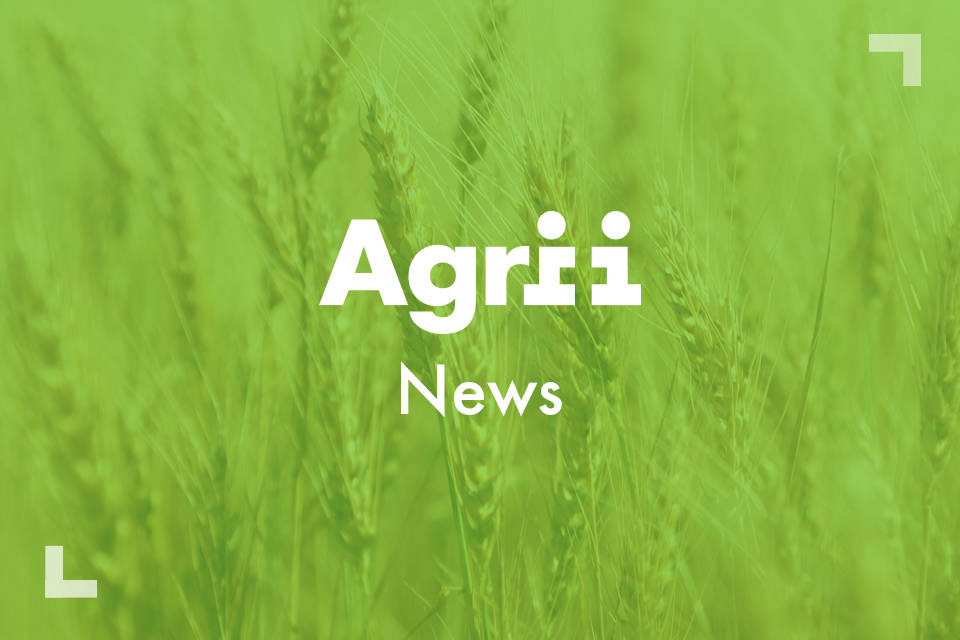
Sustainability Trials Highlight Major Opportunities for Improving Breadwheat Nutrient Use Efficiency
News - 04.11.22
Almost 9t/ha of wheat well within the Group 1 specification from just 164kg/ha of nitrogen is perfectly possible, even with late-October sowing and a particularly challenging season.
This is the experience of the latest series of replicated trials at Agrii’s Stow Long Technology Centre, where the Green Horizons team has been investigating how best to improve the nutrient use efficiency of arguably the country’s most nitrogen-hungry crop.
The 2020/21 trials involved a mixture of second, third, fourth, fifth and sixth crops of Skyfall in the Centre’s continuous wheat block following permanent grass and wildflower mixtures giving good black-grass control . The crops were all sown at 375 seeds/m2 in the last week of October and received identical crop protection and micro-nutrition programmes.
Liquid nitrogen rates and timing were varied, together with key early-season macro-nutrient applications on the high pH, high calcium clay ground indexing 2+ for both potassium and magnesium.
“Wanting to really challenge breadwheat-growing convention, we deliberately set our standard nitrogen rate of 214 kg/ha well below what would normally be applied, then cut it to just 164kg/ha in some treatments,” explains trial co-ordinator, David Felce. “And knowing how badly the ground locks-up potassium and magnesium, we varied both these while keeping sulphur rates identical across all our treatments.
“The wet conditions meant very backward crops coming out of the winter and prevented us getting our first fertiliser on until early April, after which it turned cold and dry. To help the crop cope with this we included 14kg/ha of foliar N ahead of our final pre-flag leaf nitrogen application.”
Given the challenges they faced, the crops across the 1ha block averaged a very commendable 8.35 t/ha at 12.1% protein. And, as expected, their performance dipped from over 8.5t/ha as second, third and sixth wheats to just under 8t/ha as fourth and fifth crops.
Across all the crops, the standard fertiliser programme with an initial application of 100kg/ha of polysulphate followed by the 150kg/ha N at the first split and 50kg/ha pre-flag yielded an average 8.47t/ha at 12.0% protein to generate a gross margin of £803/ha (Table - Trt 1).
Dropping the final 50kg/ha of N while keeping the rest of the programme the same reduced the average yield slightly to 8.29t/ha while lifting the protein content to 12.4% (Table - Trt 2). The net result was a margin increase of just under £30/ha at 2021 costs and crop values.
The real value from reduced nitrogen usage, however, came from a more typical quality wheat recipe with the N applications back-loaded (Table - Trt 3). Putting on 60kg/ha at the first split and 90kg/ha on the final one, indeed, boosted the average yield to 8.9t/ha, the protein content to 13.7% and gross margin to £1030/ha.
“Given the state in which the crop came out of the winter it would have been a prime candidate for early N if we could have got on the ground,” David Felce notes. “As it was – although we certainly didn’t appreciate it at all at the time – the unusually cold, dry April did us a big favour by holding back crop development. This particularly helped our back-loaded nitrogen regime.
“Even so, you can’t argue with the sort of breadwheat performance we achieved from a good 100kg/ha less nitrogen than conventional wisdom suggests. And to have increased the yield by nearly half a tonne and boosted the protein content by over 1.5% while cutting N use by 50kg/ha is hugely encouraging. Especially so, in terms of margins at current nitrogen prices.
“Equally encouragingly, our detailed input/output calculations showed a nitrogen use efficiency (NUE) of over 98% for our best performing regime against 67% in the standard fertilisation programme.”
Table: Stow Longa Wheat Nutrition Trial 2020/21
Fertiliser Treatments * N
(kg/ha) Yield
(t/ha) Protein
(%) NUE
(%) Gross Margin
(£/ha)
1: Standard N/poly-s 214 8.47 12.0 67 803
2: Reduced N/poly-s 164 8.29 12.4 83 840
3: Reduced N/back-loaded/poly-s 164 8.90 13.7 98 1030
4: Reduced N/no poly-s 164 7.98 10.9 70 643
5: Standard/back-loaded/NKS 214 8.65 13.7 78 901
* Standard N: polysulphate (100kg/ha); liquid N (150kg/ha); foliar N (14kg/ha); liquid N (50kg/ha)
Reduced N; polysulphate (100kg/ha); liquid N (150kg/ha; foliar N (14kg/ha)
Reduced N/back-loaded: polysulphate (100kg/ha); liquid N (60kg/ha); foliar N (14kg/ha); liquid N (90kg/ha)
Reduced N/no polysulphate: Liquid N (150kg/ha) Foliar N (14kg/ha)
Standard N/back-loaded/NKS: NKS (343kg/ha); liquid N (60kg/ha): foliar N (14kg/ha); liquid N (80kg/ha)
While the timing of the N as well as the season was clearly important in this performance, the trial showed other elements of the fertiliser programme were equally, if not more, crucial here.
The difference in performance at the low nitrogen rate where no spring polysulphate was applied is especially revealing (Table - Trt 4). Compared to the almost identical standard reduced N regime, yields were down by almost a third of a tonne, protein content by 1.5%,
NUE by 13% and gross margin by almost exactly £200/ha to just £643/ha.
“This underlines that improving nitrogen use efficiency is as much about balancing the other major nutrients the crop needs as it is about manipulating N type or timing,” points out David Felce. “Stow Longa soils may have good potassium and magnesium indexes as well as decent organic matters but our analyses show they also have well over 6000 ppm of calcium which seriously limits the availability of these nutrients, in particular.
“Under these circumstances, the 14kg/ha of potash and 6kg/ha of magnesium provided by the polysulphate made all the difference to the efficiency with which the crops were able to use the nitrogen. It also provided 48kg/ha of SO3, of course, but sulphur levels were identical across the treatments.
“Interestingly, the crop received an extra 17kg/ha of calcium in the polysulphate too,” he adds. One might have thought this would have been the last thing it needed on such a high calcium soil. “However, we must remember that crops need calcium, which plays a key role in nutrient uptake and neutralising the harmful build-up of acidity under drought stress, amongst other things.
“The importance of achieving a good balance between available calcium, potash and magnesium was clear where we replaced the polysulphate with an NKS fertiliser (Table - Trt 5). Despite providing much more potash than the equivalent back-loaded N programme and 50kg/ha more N, the average yield was noticeably lower at 8.65t/ha, as was the NUE at 78% and margin at £901.
“These results really underline the opportunities we have for using significantly less nitrogen that most of us have become used to, even for the most demanding crops in the most difficult seasons,” concludes Mr Felce.
“But for the greatest value, this clearly needs to be combined with the right balance of other important nutrients for the particular soil conditions. As we seek to improve both our economic and environmental sustainability, we clearly need to see NUE as standing for nutrient rather than just nitrogen use efficiency. Which, in turn, demands a much better understanding of our soils and the ways the key nutrients interact both within them and our crops.”
Join Our Community

Agrii X
We love engaging with clients and partners. Give us a follow and let's share stories for the community.

Agrii Instagram
A picture paints a thousand words. Follow us on Instagram to see what we are up to.

Agrii Facebook
Follow us on the worlds biggest social media site for the latest news and events straight to your feed.

Agrii LinkedIn
If you are all about the business, connect with us on LinkedIn to build your network
Stay In Touch

Journal Sign-Up
Receive email updates on topical news and information from around Agrii and UK Farming.

Listen To Our Podcasts
Listen to the Tramlines Podcast. Fortnightly chat about agriculture and trials with your host Tony Smith.

Agrii Insights
Read essential agri intelligence for profitable farming.

Find an Event
Join us for our upcoming events and tours.



